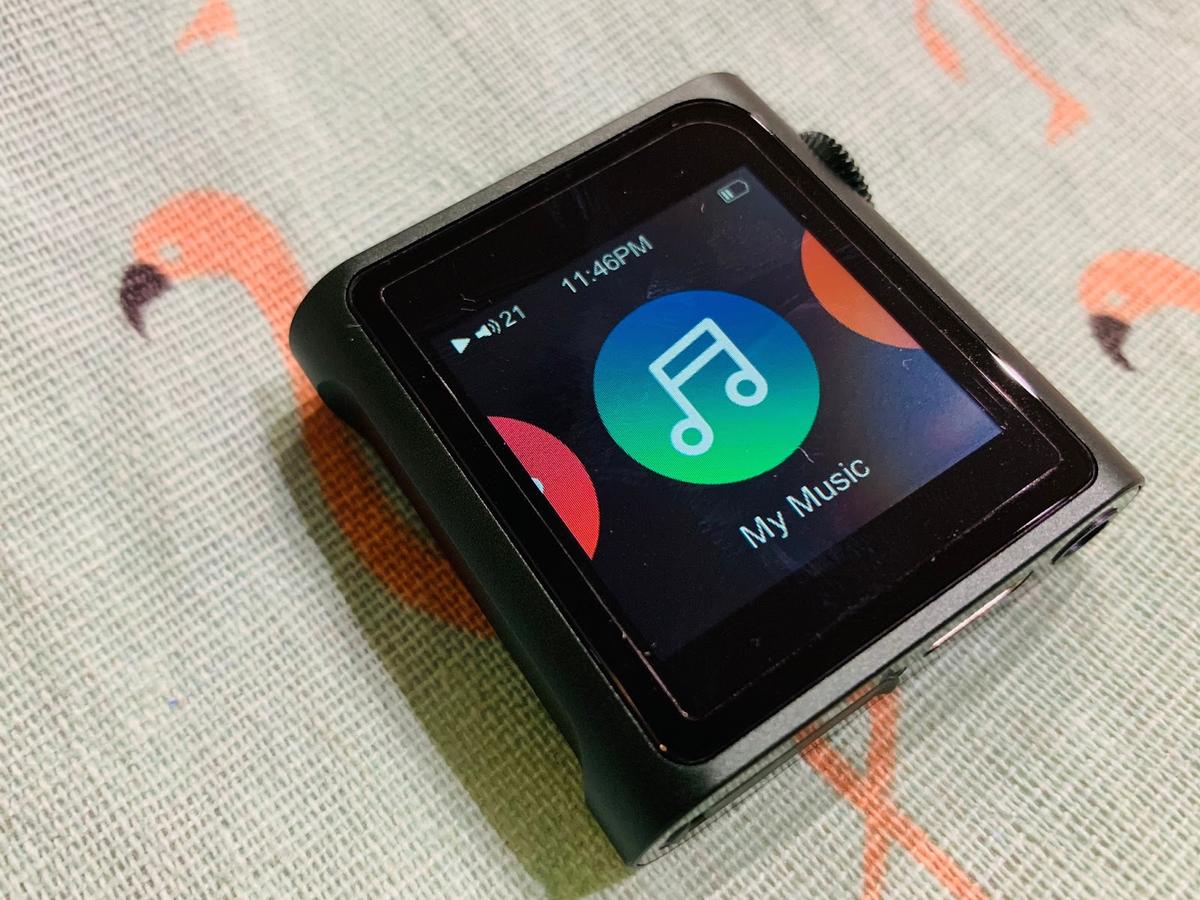The Shanling M0 Pro is an all-in-one, pocket rocket DAP that makes you ask: “Does size matter?”
Portable is the quintessential catchphrase that describes the M0 Pro.
Retailing in the USD$100-$150 range, this player is both small in size and cost. Following in the footsteps of the highly-acclaimed original M0 DAP, this Pro version manages to squeeze in a fully balanced architecture into a similarly petite frame.
- Extremely compact and light
- 4.4mm (balanced) and 3.5mm (single-ended) outputs available
- Low and high gain options
- Fast UI with quick booting
- Compatible with Shanling’s Android app
- Multiple functions and settings
- Dark background without hiss
- Low output impedance – compatible with low impedance transducers
- Generous power on tap (with balanced adapter and high gain)
- Two-way Bluetooth with stable range and connectivity
- Musical signature, neutral tonality with no fatigue
- Natural timbre
- Balanced adapter and case must be purchased separately
- Only one volume wheel/button – a possible point of failure
- Some UI quirks
- Cannot stream music
- No support for aptX Adaptive or aptX HD
- Laggy Bluetooth
- Below-average battery life
- 3.5mm (single-ended) output is slightly reduced in dynamics and soundstage compared to the 4.4mm (balanced) port (volume-matched)
- No Apple app support
Miniaturizing gear often comes at a price, and it is usually costly. Can diminutive devices be expected to compete with giants in terms of raw power?
Let’s see if the M0 Pro’s slim profile comes with compromises. Will this DAP turn out to be a Mighty Mouse? Can this wee David best audio Goliath devices?
Company Overview
Shanling was founded in 1988 and has since become one of the titans of the ChiFI scene.
Indeed, it is no exaggeration to say that a thrown stone will likely hit an audiophile using a Shanling DAP – for example, the M9, M3 Ultra, M6 Ultra, M6 Pro (21), M7, M3X, Q1, M0, and M1.
Some notable DAC/Amps dongles from Shanling include the UA1, UA2, UA5, and UA1S. The company has also released some Bluetooth gear, such as the UP5, UP2, and UP4, and even dabbled in IEMs, notably, the ME900, MG800, MG600, ME800, and AE3.
Technical Specifications
- Form: DAP (digital audio player)
- Dimensions: 43.8mm x 45mm x 13.8mm
- Weight: 36.8g
- DAC Chip: Dual ES9219C DAC
- External Memory Slot: 1 x microSD card, supports up to 2TB
- Battery Life: 14.5h single-ended, 10h balanced
- Battery Capacity: 650mAh
- Source Jack: 3.5mm single-ended, 3.5mm to 4.4mm balanced adapter sold separately
- Output: single-ended: 1.7V @ 32ohm (90mW), balanced: 2.75V @ 32ohm (236mW)
- THD+N: single-ended: 0.0006%, balanced: 0.0004%
- Channel separation: single-ended: 72dB @ 32ohm, balanced: 109dB @ 32ohm
- Dynamic range: single-ended: 119dB @ 32ohm , balanced: 121dB @ 32ohm
- Signal-to-noise ratio: single-ended: 118dB @ 32ohm, balanced: 119dB @ 32ohm
- Output Impedance: single-ended: 0.4ohm, balanced: 0.8ohm
- Frequency Response (Hz): 20Hz – 40kHz
- Decoding Format: PCM (32bit/384kHz), DSD 128
- Bluetooth: 5.0
- Bluetooth Codec Support: LDAC/aptX/AAC/SBC (as transmitter), LDAC/AAC/SBC (as receiver)
Packaging
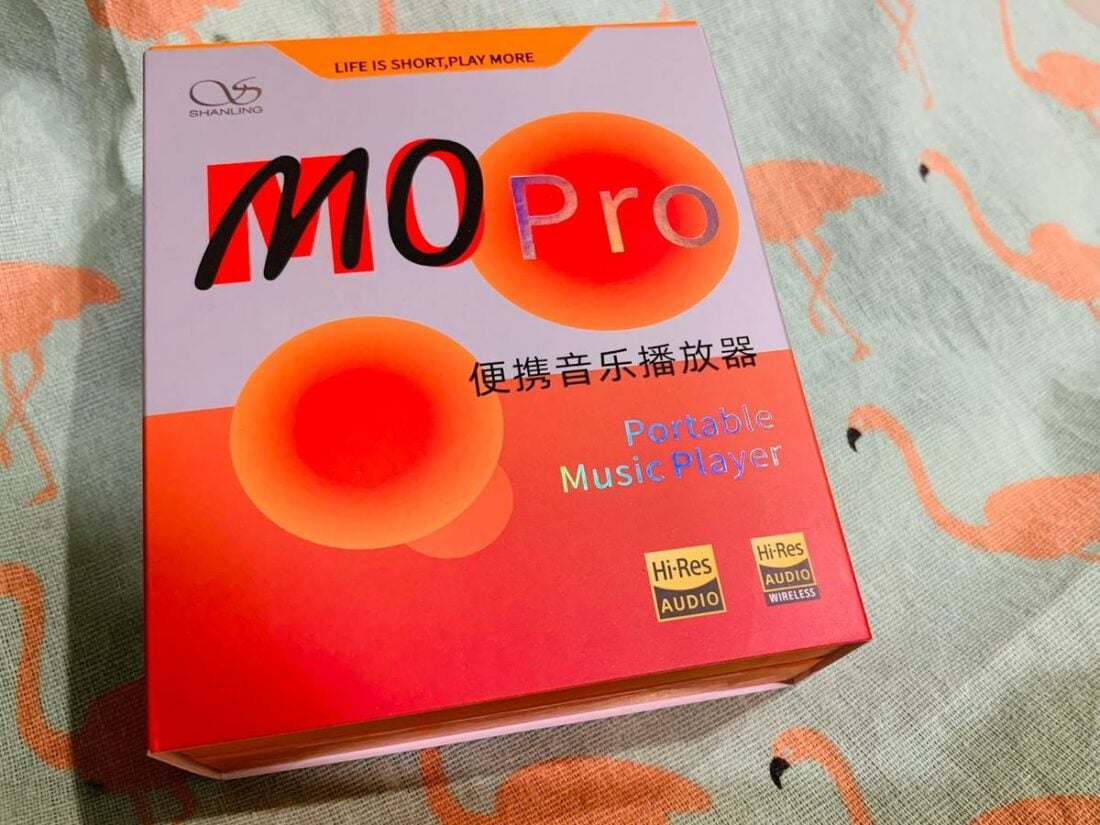
In the box
- Shanling M0 Pro DAP
- USB-C Charging Cable
There’s no sense in mincing words – the accessories are spartan.
The M0 Pro comes with a pre-installed protective screen, though disappointingly, spare screen protectors are not included.
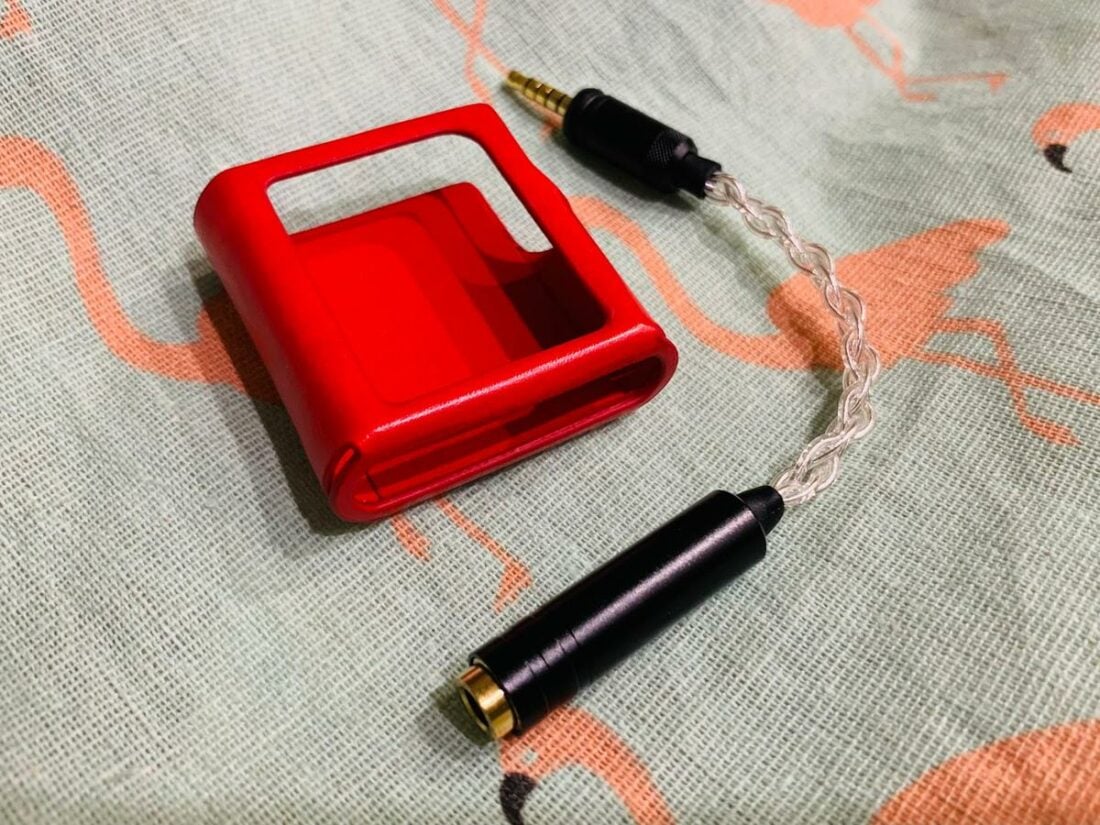
Verily, there was some hoo-ha on forums regarding the decision to omit a balanced adapter. Shanling says it was done to keep its predecessor’s small size and to lower costs, especially for consumers who do not want a balanced output and just need a Bluetooth device.
The balanced adapter is unique – it sports a male 3.5mm TRRRS plug with a 4.4mm female socket. It is only compatible with the M0 Pro and cannot be used with other 3.5mm sources.
The polyurethane leather protective case is also sold separately. It is marketed to have anti-shock, anti-skid, and anti-erosive properties. Haptically, it adds a whiff of elegance and provides some protection for the DAP.
At the end of the day, these two non-included accessories may not be essential for all customers – especially for folks not needing a balanced source to drive more demanding gear.
Design
Measuring 43.8mm by 45mm by 13.8mm – and weighing in at just 36.8g – the M0 Pro is as compact as it gets for a DAP.
It is so tiny that I suspect those with “bear paws” or stubbier fingers might find it challenging to manipulate.
One can opt for a green, red, or black M0 Pro during ordering. The DAP is fashioned from aluminum, and the build is solid.
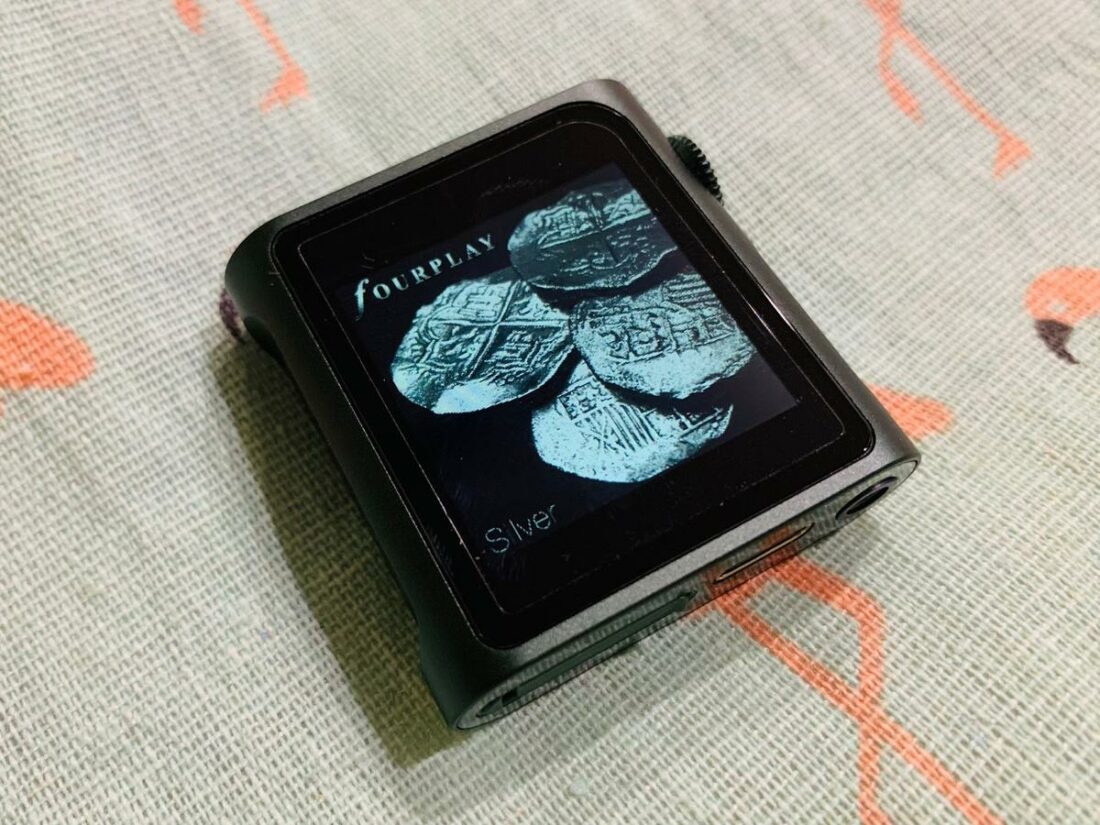
The M0 Pro boasts a 1.54-inch LCD (liquid crystal display) glass touchscreen with a maximum resolution of 240 x 240 pixels. At the bottom of the DAP, we have the USB-C female connector, 3.5mm plug, and a covered microSD card slot, which supports up to 2TB cards – there is no internal memory.
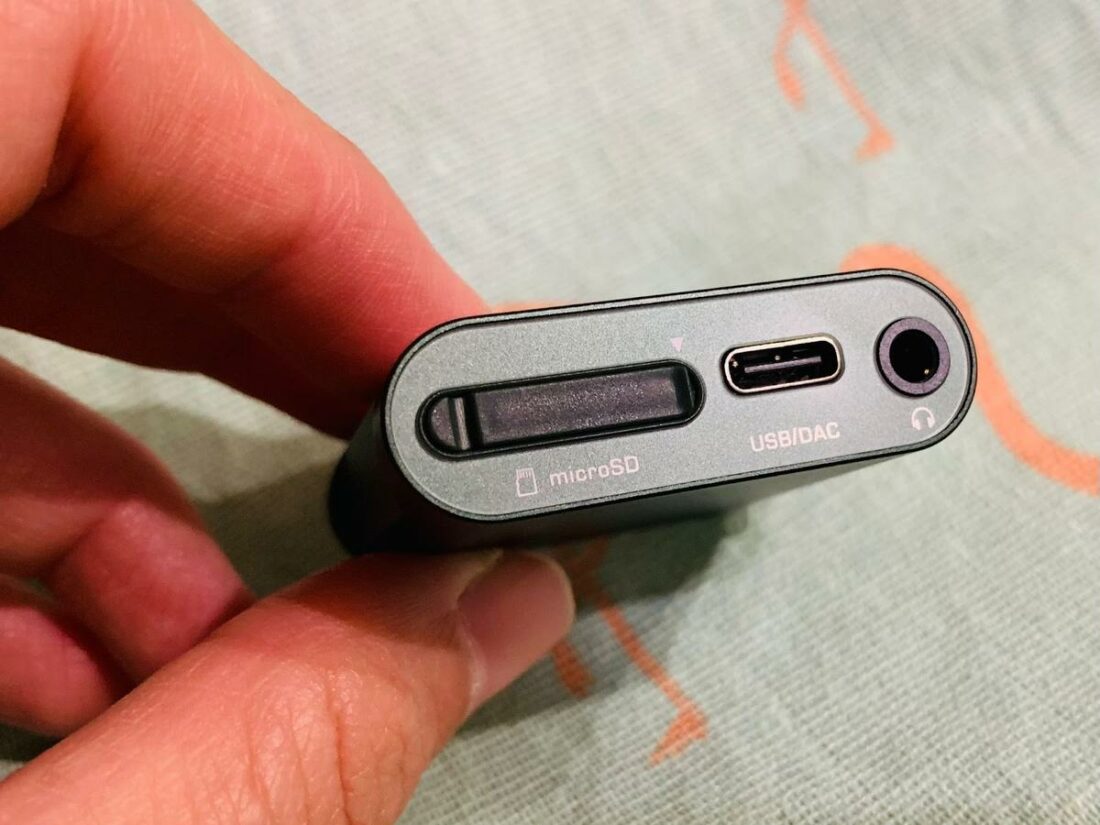
The M0 Pro has only one button on the chassis, doubling as a volume wheel and power button. This button can also be programmed so double and triple clicks perform various functions such as “previous track,” “next track,” or “pause/play.”
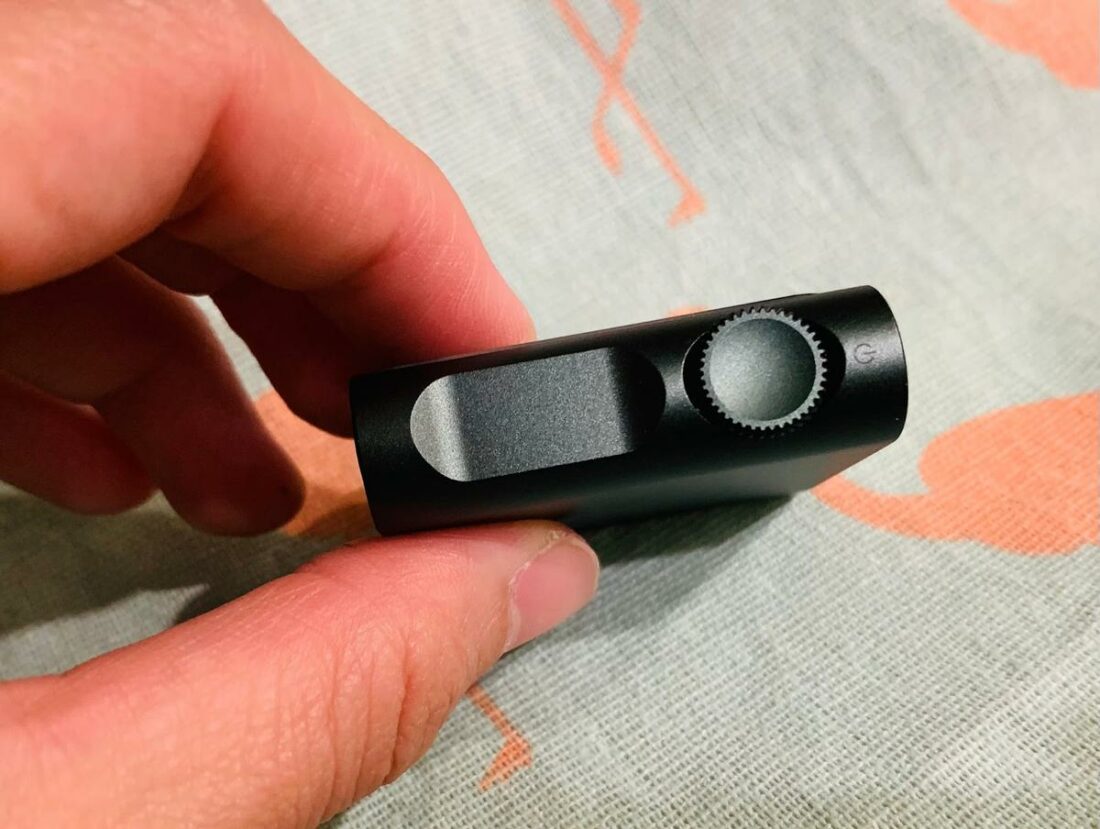
The volume wheel has 100 decently spaced steps on both gain settings.
Compatibility/UI
The M0 Pro can function as a digital source, USB DAC, and Bluetooth receiver/transmitter. It is also compatible with Synclink remote via the free Shanling Eddict Player on Android. Regrettably, as of the time of writing, no IOS compatible app is available for this DAP.
The touchscreen buttons work as advertised. I did not encounter unintended touches (although the screen can be a little overly sensitive). The UI is lightning quick, and the DAP boots up in 5 seconds (with automatic library update disabled). There is minimal delay during scrolling.
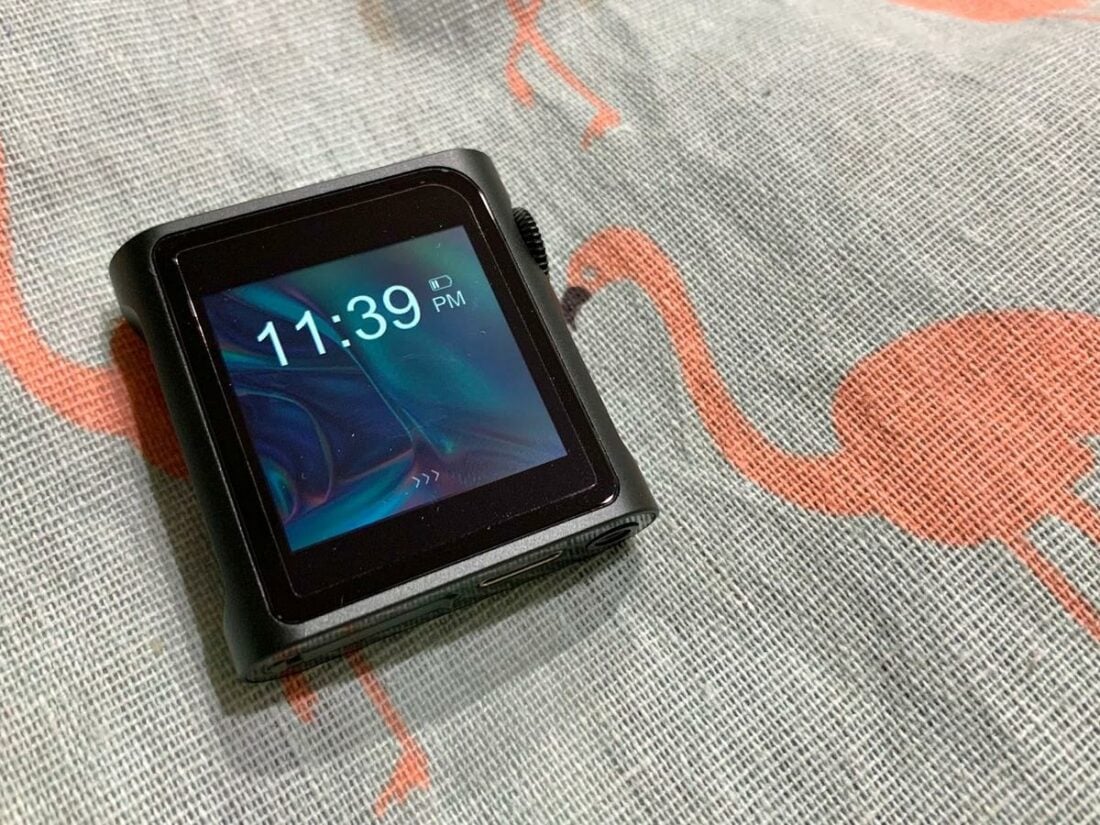
Unfortunately, I found some UI quirks.
One needs to swipe multiple times to get to the playback screen or return to the menu.
During playback, songs with long titles take ages to scroll over the tiny screen. In the library format, song titles do not scroll at all, so song headers may appear identical at a glance, especially if the files are labeled with the artist’s name at the front.
The M0 Pro is ideal for audiobooks and podcasts, as it supports multiple languages, and also allows playback speeds of 1.25x, 1.5x, and 2x. However, the progress bar may be inaccurate for long podcasts due to the small screen.
One can customize sleep or idle timers, gain options, gapless playback, custom and pre-set EQ, DAC filters, channel balancing, and shuffle and repeat functions. Users can even create customized playlists or play songs via albums/folders/artists/genres. All the usual shebangs that modern-day DAP users expect are included.
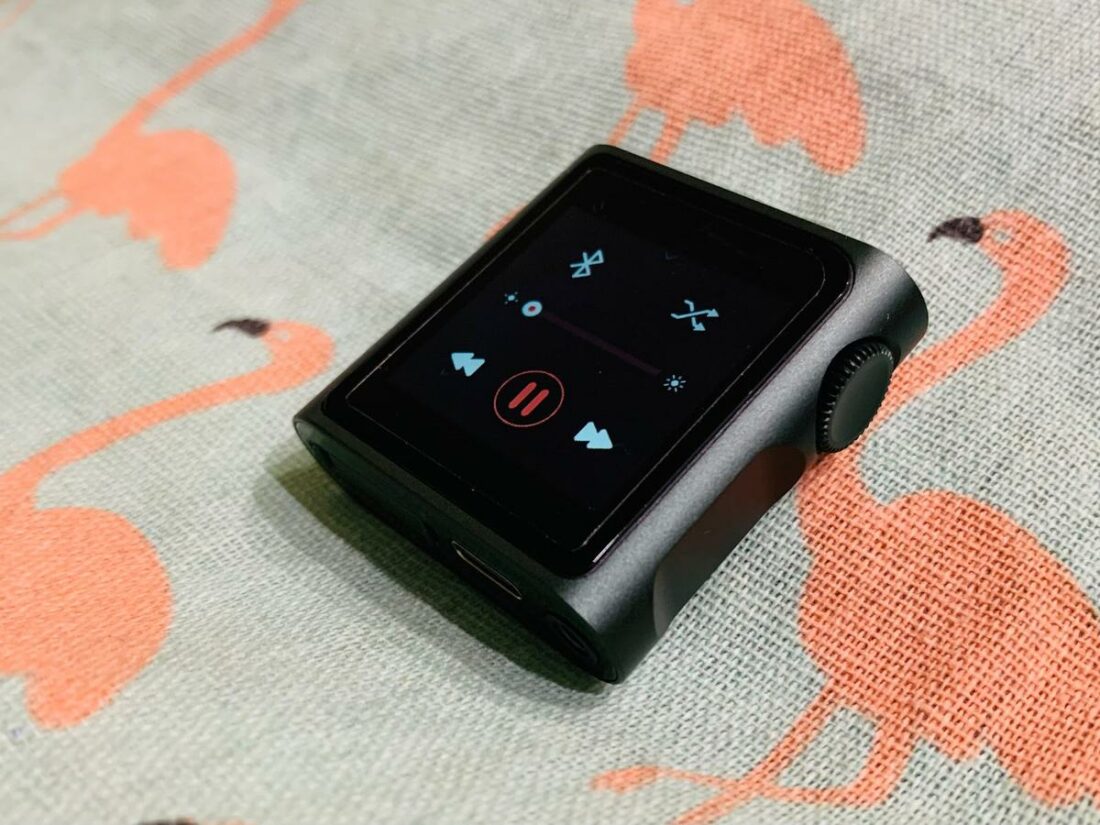
For our HiFi fans, this DAP can play music files up to PCM 32bit/384kHz and DSD 128. However, the M0 Pro does not support any streaming or network connectivity. It also does not have any radio or microphone functions.
A potential dealbreaker: those looking for a streaming DAP will be disappointed.
Check out the M0 Pro driver page for firmware updates. Given Shanling’s excellent aftercare track record, I am confident that the company will continue to fix the UI issues with forthcoming patches!
Battery
Packing a 650 mAh battery, the M0 Pro is advertised to have a standby charge of 1 month!
Publication materials also quote a battery life of14.5h single-ended and 10h balanced. In practice, battery life varies depending on the volume and usage of the screen display, lossless versus lossy files, wired versus Bluetooth playback, and gain settings.
From my testing, the battery ratings are about two hours lower on both outputs.
There is no battery care mode, but it can support fast charging – 50% charge in just twenty minutes. Using a slower charger long-term might be wise to preserve the battery. The M0 Pro does not get hot during usage and charging.
Internals
The M0 Pro contains an X1000 main control chip within a 6-layer printed circuit board (PCB) capable of running the Mtouch OS very smoothly. Dual ESS ES9219C DAC chips handle decoding duties – only one DAC is activated when the single-ended output is used, and both come into play when the balanced adapter is connected.
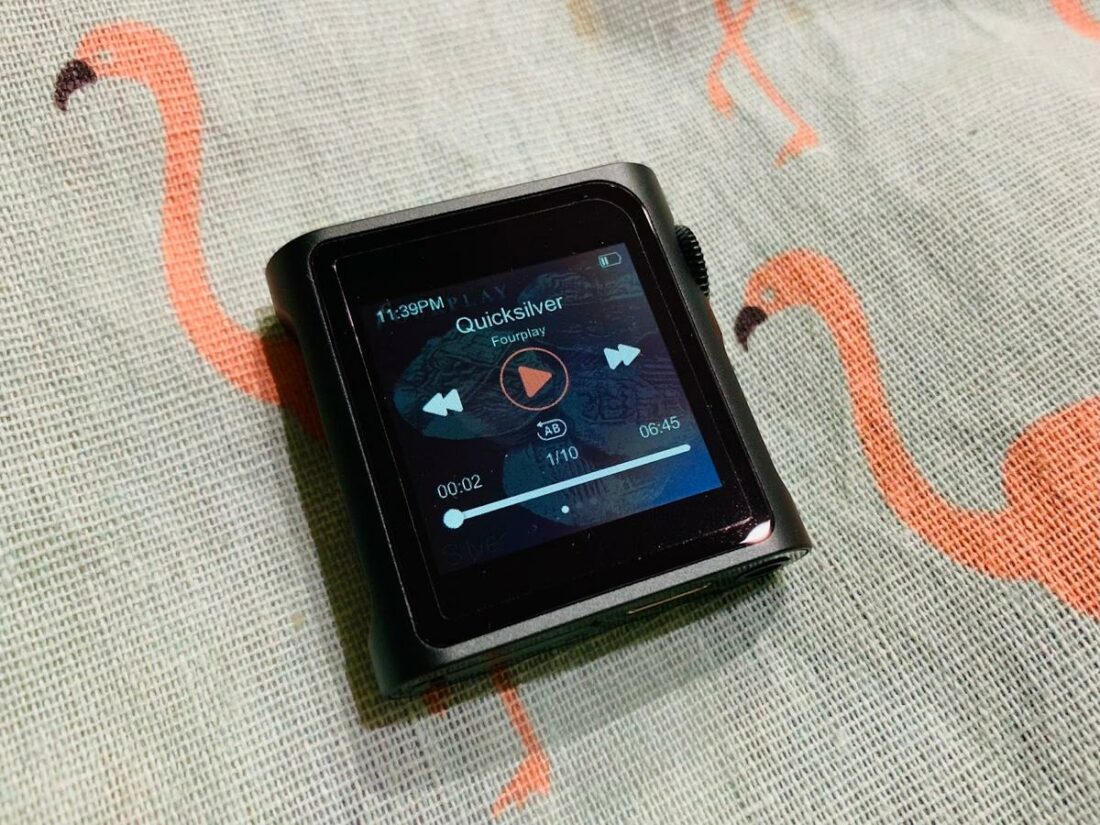
Bluetooth Connectivity
This device uses Bluetooth 5.0 and supports various Bluetooth codecs – LDAC/aptX/AAC/SBC when functioning as a transmitter and LDAC/AAC/SBC as a receiver. The M0 Pro does not support aptX Adaptive or aptX HD.
I have no issues pairing the M0 pro as a Bluetooth receiver and transmitter on various Windows computers, Apple devices, Android phones, and wireless gear. Bluetooth connectivity reaches about 10 meters with thick walls and around 15 meters without obstructions.
I did experience stuttering with obstructions and at further distances. In crowded places, the generally good Bluetooth stability does take a hit, although dropouts are infrequent (at most one per hour).
Unfortunately, there’s a bit of lag when changing songs while on Bluetooth.
Shanling M0 Pro Sound (Wired)
The keyword to describe the M0 Pro’s soundscape is “musical.”
This DAP is quite neutral, the note weight is on the slightly thicker side, and music sounds natural yet euphonic. Timbre is excellent, and nothing sounds fatiguing or edgy. The M0 Pro doesn’t color the music much and lets the connected transducer do most of the talking.
The M0 Pro could be more technical and detailed, so you might need to look elsewhere if you want a very analytical source. At its price point, the M0 Pro is slighly above average in soundstage, layering, instrument separation, and micro-detailing. There are more technical single-ended and balanced DAPs out there.
The M0 Pro has a single-ended output of 1.7V @32ohm (90mW), and 2.75V @32ohm (236mW) via the balanced output. The single-ended output should suffice for most IEMs, though gear with higher impedance and/or lower sensitivity might scale better with the extra juice provided by the balanced adapter.
Output ports aside, the low gain setting is ideal for high sensitivity and low impedance transducers, whereas the high gain mode is useful for more demanding equipment, such as low sensitivity/high impedance sets, especially if more headroom is needed.
My litmus test for drivability includes the notorious Final E5000 (low sensitivity) and the legendary Sennheiser HD650 (high impedance). Weaker DAPs with insufficient output will cause the E5000 to sound boomy and bloated in the bass, while the HD650 come across as undynamic and boring.
It is said that an ant can lift fifty times its weight – this ant manages to drive heavy loads with aplomb.
My test track for bass texturing and speed is Sting’s Englishman In New York, where there is a complex double bass solo in the middle of the song. The M0 Pro powers the E5000 satisfactorily to hear distinct textures and showcase moderate bass speed, though larger desktop set-ups, unsurprisingly, fare better.
The balanced adapter is a game-changer if one intends to drive something more demanding than sensitive IEMs.
The M0 Pro has no hiss with highly sensitive transducers and has a dark background on both output ports, which shows good noise floor control. Another plus point – with its low output impedance (single-ended: 0.4ohm, balanced: 0.8ohm) – the M0 Pro makes a great pairing for low-impedance transducers).
Sadly, the M0 Pro’s single-ended port gives slightly weaker dynamics, soundstage, and technical performance, even when volume-matched against the balanced adapter, something fairly common with lower-priced gear.
Comparisons
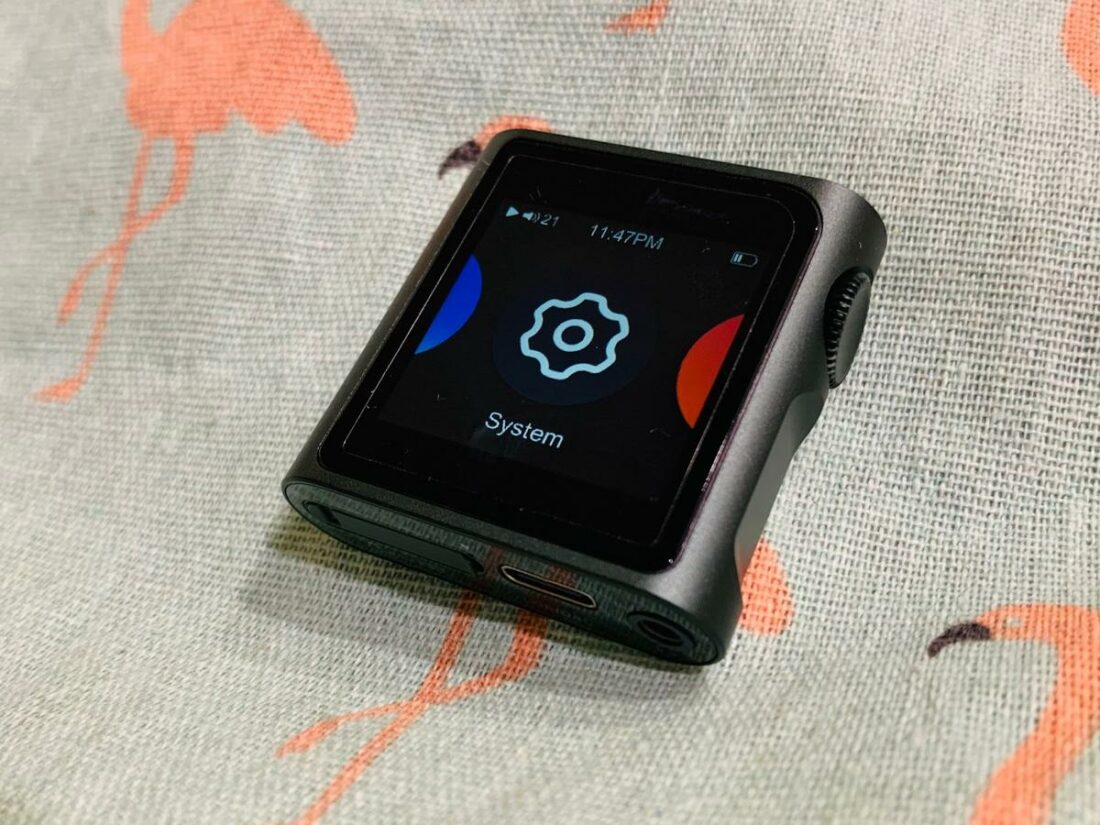
Vs. Hiby R3 Pro Saber 2022
Like the M0 Pro, the R3 Pro Saber 2022 operates dual ES9219 DAC chips with single-ended and balanced outputs. It is, however, larger in profile and weight, and costs almost double the M0 Pro.
Both DAPs boot up fast, though the Saber 2022 has a more friendly UI, and its larger screen provides greater ease in searching for songs and scrolling. The R3 Pro Saber 2022 also supports WIFI, Tidal (MQA), and Qobuz streaming and has an Ebook reader and pedometer!
The Saber 2022 has more power output, with superior soundstage, imaging, layering, and instrument separation on both output ports. Tonally, the Saber 2022 is also neutral, but it has a thinner note weight and sounds edgier and more sterile than the musical and laid-back M0 Pro.
Bluetooth stability and range are superior in the M0 Pro, though the Saber 2022 has slightly better battery life. However, the Saber 2022 does get warm during prolonged usage or charging, while the M0 Pro remains ice-cool.
Vs. Sony NW-A55
The A55 is a single-ended only DAP, and it embraces the colored buttery smooth and warm Sony house sound. Frankly, in stock form, this DAP’s sound is meh at best, as the specs and performance won’t uproot any trees.
However, using the free Mr. Walkman firmware mod unlocks the A55’s hidden potential, and it sounds like a pricer DAP – technicalities improve, pesky volume locks are overridden, and battery life extends. There are four new tuning options to play with to change from warm to neutral to bright.
Comparing the neutral firmware mod on the A55 to the M0 Pro, the former has a thicker note weight, while the latter is slightly superior in soundstage, imaging, clarity, and micro-details. If the balanced adapter of the M0 Pro is connected, then the A55 falls even further behind in technicalities.
The A55 has better Bluetooth connectivity and battery life than the M0 Pro but takes an extended time to charge. The A55 has a slow and ponderous UI, which takes ages to boot up. It is mandatory to scan the entire library each time the A55 is turned on, while the M0 Pro is Speedy Gonzalez in contrast.
The A55’s real Achilles’ heel is a lack of power – it cannot drive demanding gear well, even with the firmware mod applied.
Vs. Shanling Q1
The Q1 uses an older ES9218P DAC chip in a slightly bigger body than the M0 Pro. Tonally, the Q1 shares the Shanling house signature of being musical yet neutral.
The Q1 is weaker in technicalities (soundstage, imaging, micro-details, and instrument separation) compared to the single-ended port of the M0 Pro. From the balanced output, the stark difference in technical prowess is even more pronounced.
The Q1 is a step ahead when it comes to battery life (about 21 hours), but the M0 Pro beats it in Bluetooth range, output power, and touchscreen responsiveness.
Where to Buy
Conclusion
So back to our very first question: “Does size matter?”
Despite its deceptive Lilliputian size, the M0 Pro punches above its weight when it comes to output power. With high gain and the balanced adapter plugged in, the M0 Pro can decently drive some heavyweights like the Sennheiser HD650 and the Final Audio E5000.
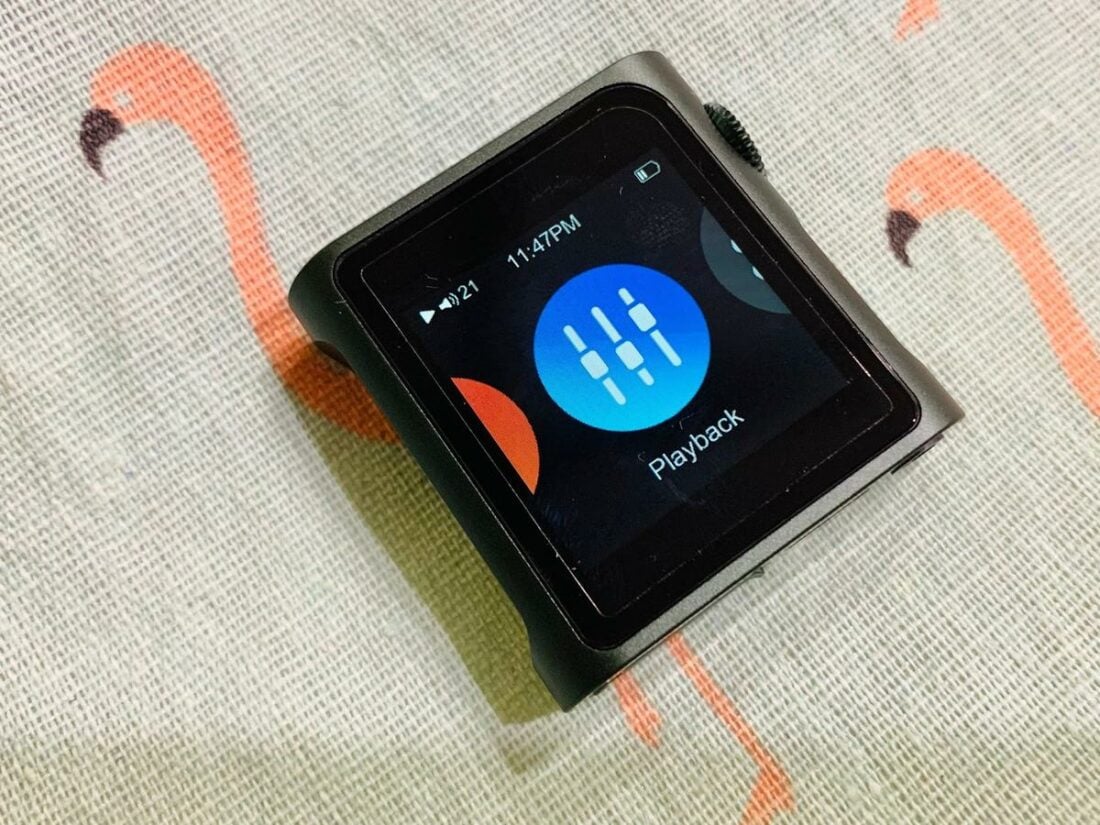
This midget bazooka has a fast multi-functional UI, secure two-way Bluetooth, and a dark background with no hiss. The M0 Pro’s intoxicating euphonic and neutral tonality, with an organic timbre without harshness, makes it an excellent performer. I especially like that it synergizes well with fussy low-impedance gear.
The elephant in the room is none other than the requirement to purchase the proprietary balanced adapter separately. Without it, one just sees – or rather hears – a fraction of this DAP’s potential.
The M0 Pro’s battery life is sub-par and additional embellishments like streaming and WIFI connectivity would be appreciated. The M0 Pro also suffers from UI idiosyncrasies, with the half-pint screen contributing to difficulty reading song titles.
Nevertheless, for the asking price, this itsy-bitsy box of tricks is larger than life and provides a good value proposition. Coupled with the compact and light profile, the M0 Pro is an essential arsenal for budget audiophiles searching for a competent portable source.
